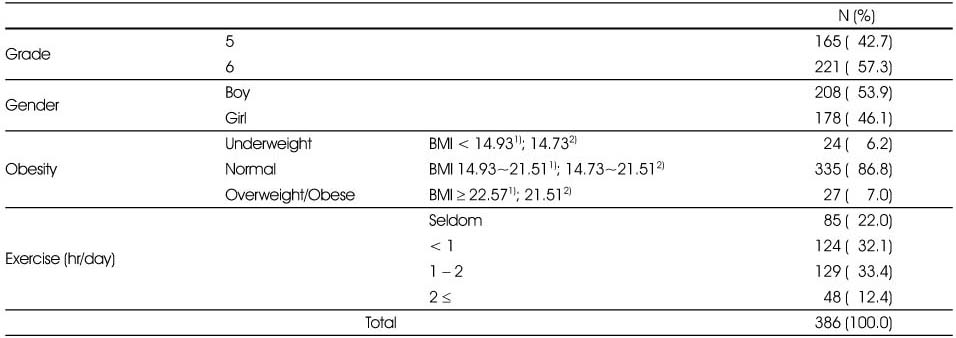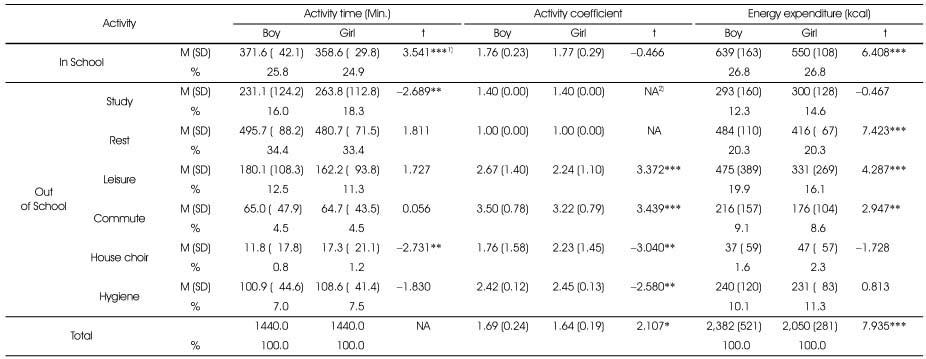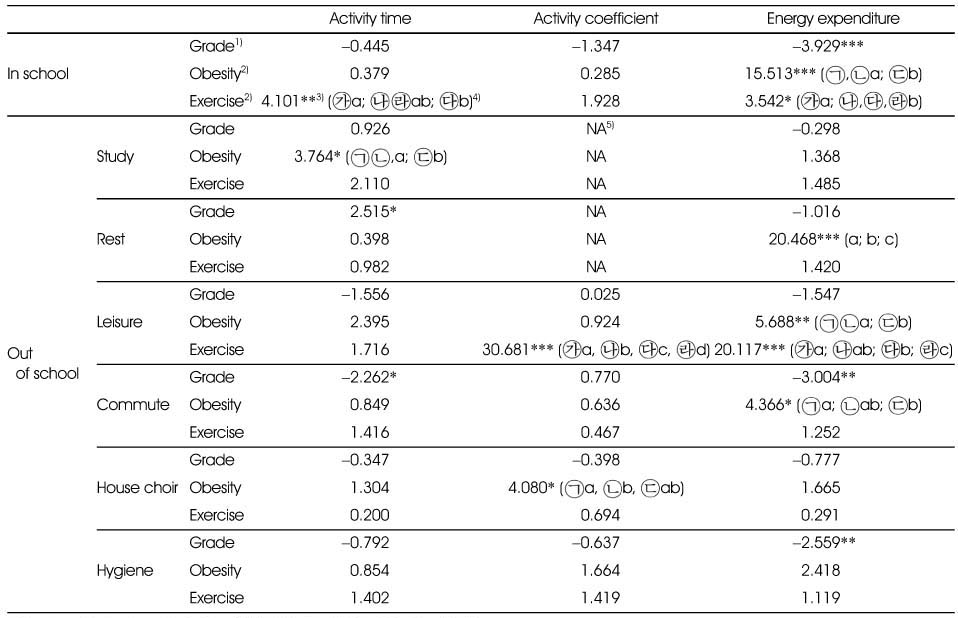The Analysis of Activity Energy, Total Energy, and Estimated Energy Expenditures in 5th and 6th Grade Primary School Students
Article information
Abstract
This study was conducted to investigate the time spent, activity coefficient and energy expenditure on 7 different types of activity. Total of 386 5th and 6th grade primary school boys and girls in Seoul participated in this study. The participants spent 8 hrs for rest, 4 hrs for out of school study, 3 hrs for leisure, 1 hr 45 mins. for hygiene, 1 hr for commute, and 15 mins. for house choir activity in the day of 6 class hours. The average activity coefficient of 1 day for boys and girls were 1.69 and 1.64, respectively. The TEEs were 2,382 kcal and 2,050 kcal for boys and girls, respectively. The energy cost for study related activity (in school and study activities) was 40% of the TEE, and for rest 20%, for commute 9%, and for hygiene 10% of the TEE. The energy cost for house choir was only about 2% of TEE. The 91.2% participant's EER was higher than the EER shown in the table of 2010 DRI for Koreans. When the participant's EER was compared with the energy allowance calculated by the method in 2000 RDA for Korean, 81.6% was in the range of ± 5%, and the correlation coefficients between the 2 values were 0.981 for boys and 0.978 for girls, which means high agreements.
Notes
This work was supported by a grant from Korea National University of Education (2010)







